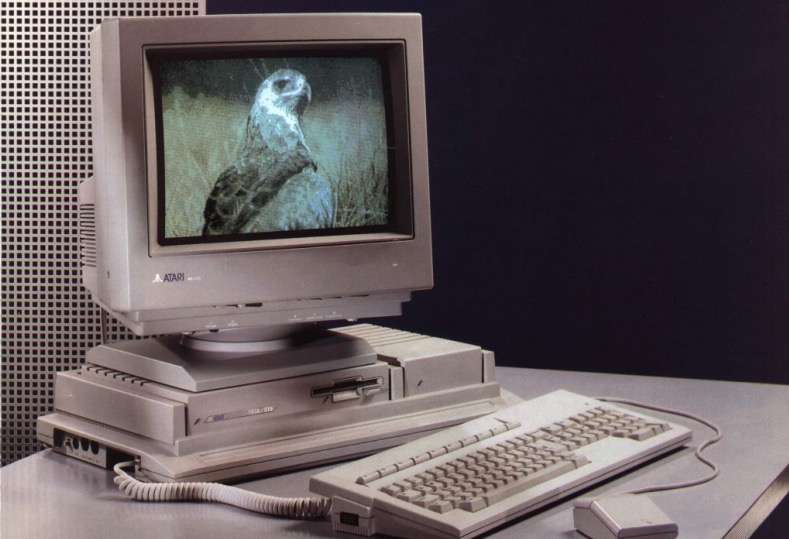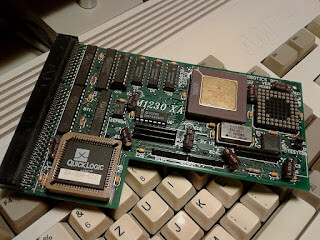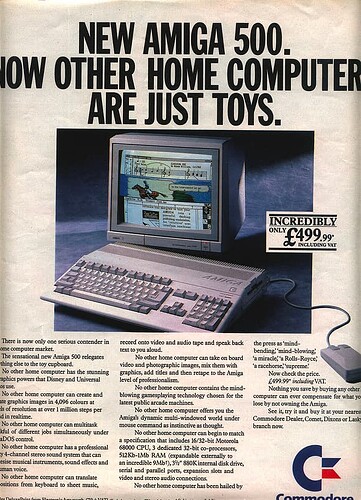My first and only 16-bit computer was an Atari Mega STe I got in 1992. I started out with 1 MB of memory and a floppy drive. I upgraded it to 4 MB and a 35 MB hard drive.

I mainly used it for school, for writing school papers, and as a terminal, so I could log in to my school’s systems to do my programming assignments, and use the internet.
I got it mainly because I saw it as a continuation of the Atari line. I didn’t learn until years later that it really wasn’t (that was the Amiga). Nevertheless, what computer you had largely determined the computing community where you hung out. I liked the Atari crowd. I kind of "grew up’ with them. Still, the STe filled the bill for what I needed.
I had owned an 8-bit Atari 130XE for a few years before that (also using it for school).
My most ambitious project with it was installing MiNT, an open source Unix-like operating system for the ST that ran alongside TOS/GEM. The reason it was such an undertaking was, as I remember, there was no binary to download. You had to install it from source. I don’t remember why I did it this way. It may have had to do with wanting to migrate to a MiNT file system, but I used GCC as a cross-compiler for it, which meant that I had to have a Unix account. I don’t think I would’ve been able to pull this off without that.
I configured a 68000 version of GCC, compiled that (with the host’s GCC compiler), used 68000-GCC to compile the MiNT kernel, downloaded the binary, and booted it. It worked.  After that, I was able to download a pretty complete set of GNU tools for MiNT, which was a set of binaries, and man pages, and install that.
After that, I was able to download a pretty complete set of GNU tools for MiNT, which was a set of binaries, and man pages, and install that.
I did very little programming on the STe. I got a version of Sozobon C for TOS, which was free. I had GCC on MiNT.
I ported a couple semester projects to the STe, a simple 3D wireframe graphics system written in C (which I compiled for TOS), and a Pascal-like compiler I wrote, written in C, Flex, and Bison (which I compiled for MiNT). It all worked, which was nice to see.
I knew about the Atari Archive, an FTP site at the University of Michigan, and I got a lot of my 8-bit software from it. It had a ton of free/shareware software for the 8-bit and ST.
BTW, the Atari Archive remained operational through about 2020, when it was finally shut down. An archive of it exists on the Internet Archive.
I was looking at what I could get from the AA for the STe, and I had a large number of “new file” sets from it. They were hard to use, since they were just naked listings of new files to the archive, no paths (as I remember), and no descriptions. They were cataloged I think each week, since new stuff was coming in all the time. The AA had a second “complete catalog” file you could get that contained a complete listing of the files in the whole archive, along with short descriptions of what they were, and where they were located. It was taking me a lot of time to go through each file in the “new file” sets, and then try to locate them in the “full directory.” So, I wrote a shell script in MiNT, using sed and awk, that went through each file in the “new files” sets, found it in the “full directory,” and created new files that just contained the new file names, their location, and description. I used that script a lot. 
All of the non-MiNT programming I did was in TOS, not GEM. As time passed, I was using GEM less and less, which was an interesting experience. It was making my STe feel more like a “generic” computer, since I wasn’t using much of what made the STe special, anymore. In fact, I met a friend of a friend who also had a 68000-based computer that was running OS9. Seeing him use that felt a lot like what I was doing with my computer.
A few years later, I got my first 32-bit computer through work. They were getting rid of an old 33 Mhz 386 PC. They offered to give it to me, and I accepted. They gave me their copies of MS-DOS, Windows 3.11, and Borland C++ to go with it.
I had been working on a simple particle simulator written in C on my STe (in TOS), but I was running up against its speed limits. I wanted to have more objects in it, but it was really bogging. So, I ported it to the PC, and was pleased that it was able to handle what I wanted to do with the simulator, without breaking a sweat.
Around the same time, I was starting to get on the web at work, and I was getting more interested in it. I set up Netscape on Windows on my PC at home, and got an ISP account, bringing over a 28.8Kbps modem I had gotten for the STe, and started surfing the web from home.
It got to a point that I was using the PC more, and my Atari less, and I finally got a Windows PC in 1997 (I forget the speed, maybe 266 Mhz), and didn’t look back.



